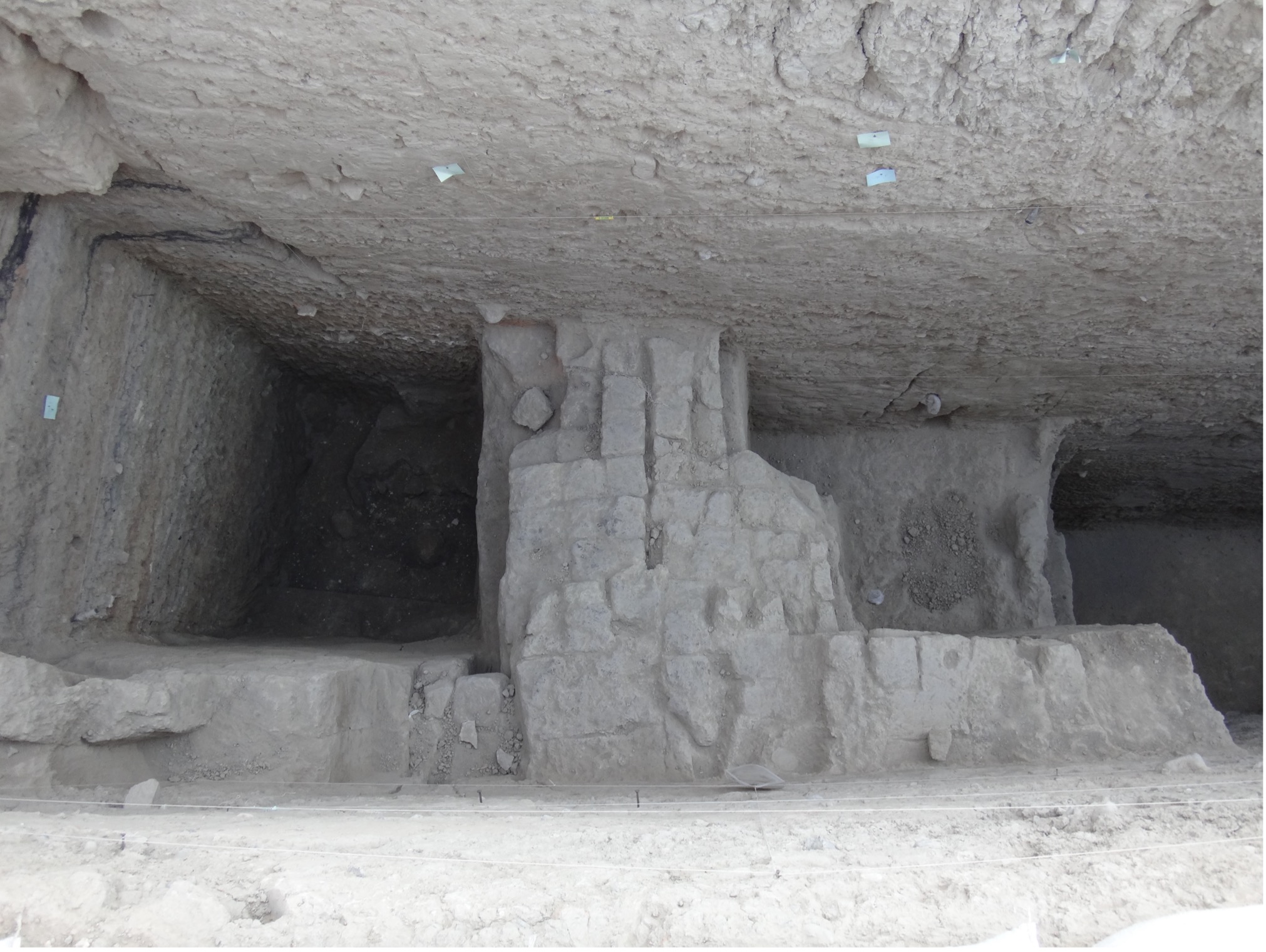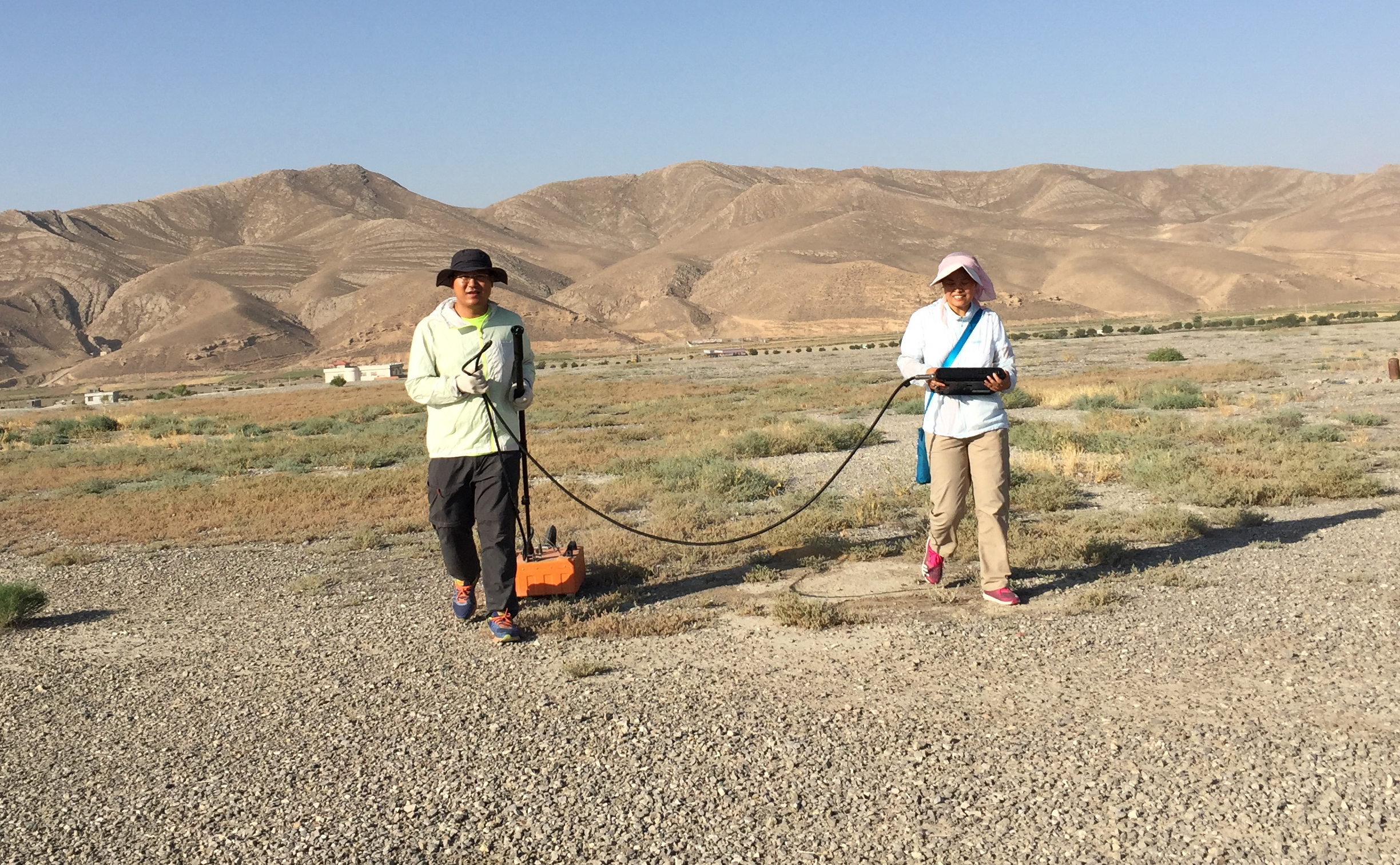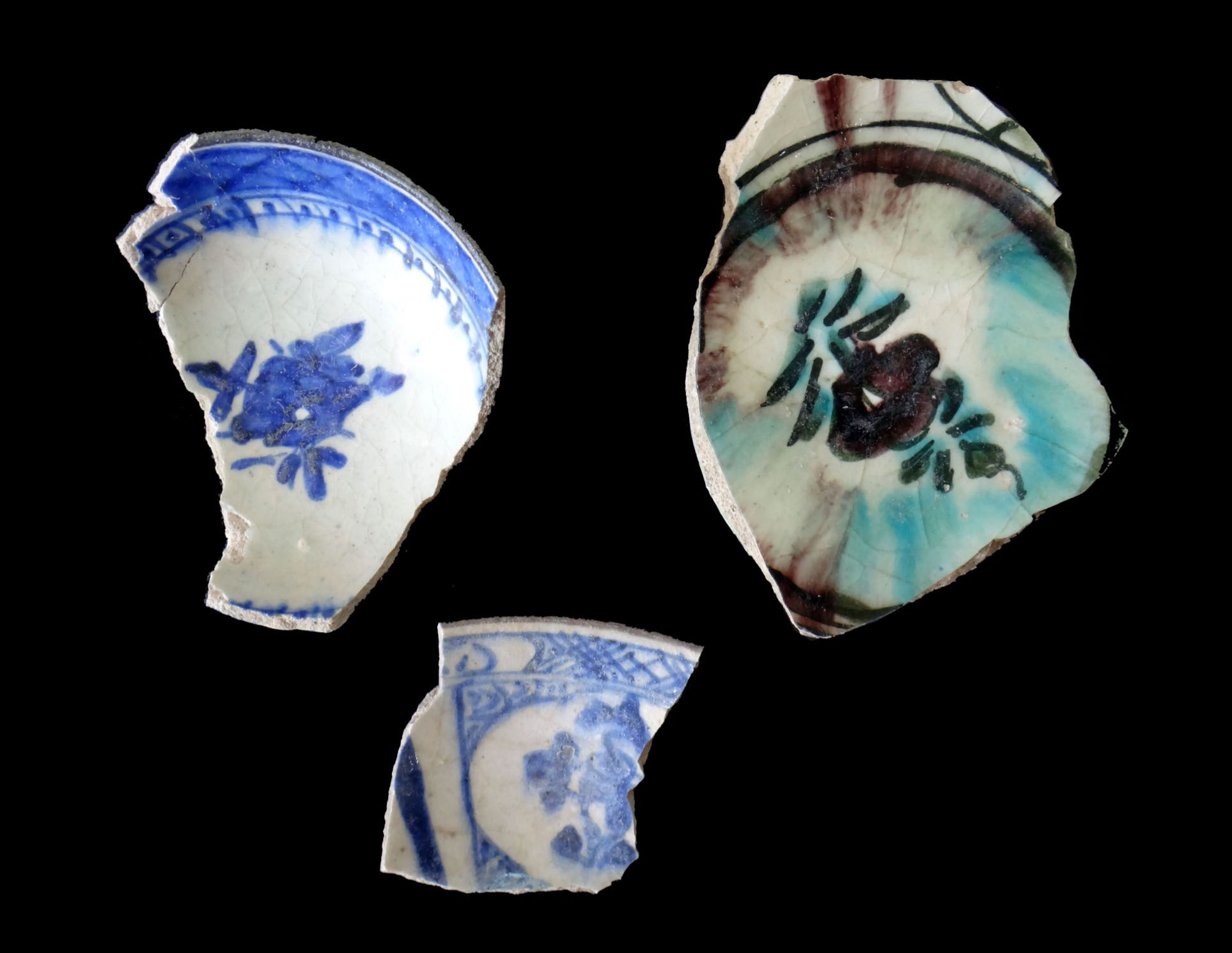Tepe Naderi is located in Northern Khorasan Province, on a section of a major route from Central Iran to Central Asia. It is an imposing site, the second largest tepe (mound) in the upper Atrak valley, and is very rich in history. In the late 19th century, King Nasir al-din Shah (1831-1896) of the Qajar Dynasty came to visit the old citadel of Shirvan (modern Tepe Naderi) during his pilgrimage to Mashhad. According to Eʿtemād-al-Salṭana, who accompanied the Shah on his second royal tour of Khorasan, the tepe had a castle on the top and a fortified wall, with a large moat (5-7m wide) around it. The fortified wall had two entrance gates and 40 towers along its perimeter, but only one tower is partially left standing today; the castle on the top has totally vanished. The dates of the tepe and the wall, however, remain a mystery.
The field project at Tepe Naderi was initiated in 2015, when Nanjing University and the Research Institute of Cultural Heritage and Tourism of Iran signed a Memorandum of Understanding. The general background to this project is China’s “One Belt One Road” Initiative, of which Iran is an important partner. In response to this initiative, Chinese financial investment in Iran grew steadily. Scholarly exchanges in the academic and educational spheres are an integral part of this initiative, but initially no progress was made with respect to the archaeology of Iran. The field project at Tepe Naderi was therefore launched to fill this intellectual vacancy, with much aid from seasoned American scholars, including Prof. Daniel T. Potts of the Institute for the Study of the Ancient World.

Fig. 1: Mud-brick walls of the Bronze Age at Tepe Naderi. (Photo by Liangren Zhang, 2018)
The concept of the Silk Road is too familiar to readers to require any explanation. What is important is that it has been a dynamic road network connecting East Asia, West Asia, South Asia, Russia, and Europe, and that Iran has played a particularly significant role in its history. This is no coincidence because Iran is located right at the crux of the road network; in addition, the peoples of Iran have been very active in spreading goods, technologies, and religions across the Eurasian landmass. In particular, contact between China and Iran has been very close, as is eloquently borne out by the Sino-Iranica of Berthold Laufer and The Golden Peaches of Samarkand of Edward Shafter.
This project raises a number of research questions. One regards the origin of the tepe, a very common form of settlement in Iran and the Near East, Central Asia, and South Asia in general. The interesting thing about the tepe is that ancient people added layers of mud-brick dwellings upon one another’s ruins, such that the tepe kept growing for hundreds or thousands of years [Fig. 1]. However, doing so meant that they had to level the ruins to make the ground for the floors and walls of new dwellings. In China, ancient peoples sometimes did this as well, but only a few times, so that a site might have, for example, five or six layers of occupation lasting 200-300 years. Why did ancient peoples go to the trouble of building their dwellings upon earlier ruins rather than on fresh ground? One hypothesis is that they did so to avoid floods. In much of Iran, rainfall is rather meager and the vegetation is thin, but when rain does occur, it can rapidly lead to flooding. In 2016, we witnessed a flood in Northern Khorasan province, when a 15-minute rainstorm turned the foot of a mountain into an ocean of torrent, endangering dwellings standing right upon the ground. To test the flooding hypothesis, we opened a long trench, Trench 1, to the south of the tepe. It is 30m long and 2m wide so as to arch over the tepe and the outside area, enabling us to investigate the early history of the tepe and the interaction between flooding and human occupation.

Fig. 2: Ground penetrating radar survey at Tepe Naderi. (Photo by Ziqi Guo, 2018)
Excavation was resumed in 2018, and the trench was extended up on to Tepe Naderi, but due to the outbreak of COVID-19, the excavation planned for 2020 was canceled. The project is planned to be a long-term one, and we hope to resume the excavation as soon as possible. As a result of the two seasons of fieldwork in 2016 and 2018 [Fig. 2], we have established a sequence for the earliest strata and identified a number of features. The earliest ones discovered to date are from the late Chalcolithic/early Bronze Age (5128±30 cal BP). One is a sturdy mud-brick wall, which may have served as the perimeter of the tepe, the whole of which is datable to the Bronze Age. Upon the alluvial deposit that has accumulated on the original surface of the tepe, however, several features of the Islamic period (291-0 cal BP, 2 Sigma, 95.4% probability) have been found. In one large pit a good number of examples of blue-and-white stonepaste ware from the Qajar Dynasty (1789-1925) were found [Fig. 3].

Fig. 3: Fragments of blue-and-white stonepaste ware of the Islamic period found at Tepe Nader. (Photo by Ali A. Vahdati, 2018)
The blue-and-white porcelain of the Ming and Qing dynasties was so popular in the Islamic world that it inspired the production of imitations using locally available sand, clay, and glass. This phenomenon, which has long been treated in Western scholarship, has caught little attention from Chinese scholars. The unexpected discovery of blue-and-white stonepaste wares provides a welcome opportunity to revive the long-forgotten history of the vibrant trade between China and Iran.
Liangren Zhang, Professor, School of History, Nanjing University, China. Email: zhlr@nju.edu.cn
Ali A. Vahdati, Associate researcher, Iranian Ministry of Cultural Heritage, Tourism, and Handicraft, Northern Khorasan Office, Iran. Email: vahdatiali@yahoo.co.uk